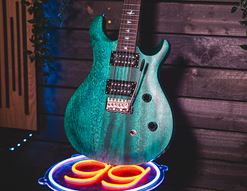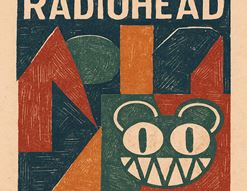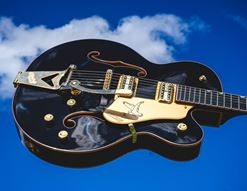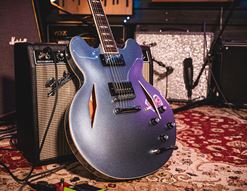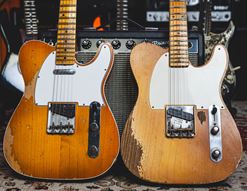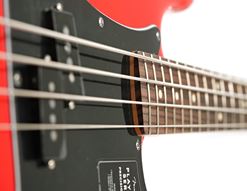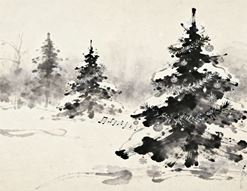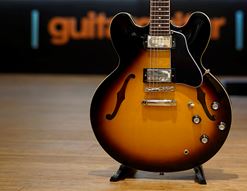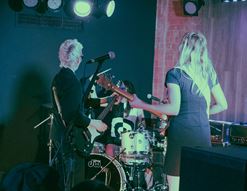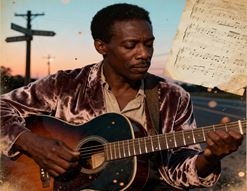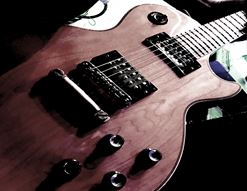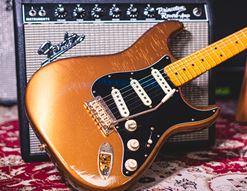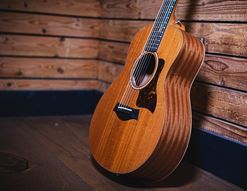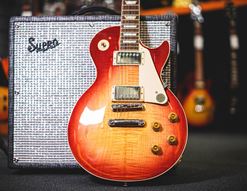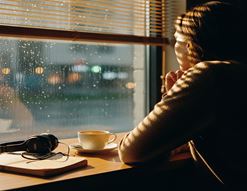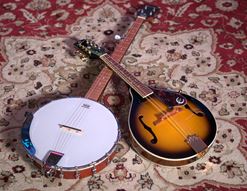What's your favourite horror movie soundtrack?
Halloween
The Exorcist
Nightmare on Elm Street
Suspiria
The Wicker Man
The Shining
Bram Stoker's Dracula
The Fog
Jaws
Something went wrong while voting, please try again later.
This spooky season, I challenge you to do more than watch your favourite horror movies. I challenge you to get creative with your instruments and recreate some of the diabolic scores to these movies!
More importantly, I suppose, I want to talk to you about some of the cool and interesting methods incorporated by the composers of Hollywood’s nastiest and creepiest movies, with the aim of inspiring you to try out their methods in your own music. Whether unusual in instrumentation or hellish in composition, each of these underworld masterpieces has something to offer in terms of innovation.
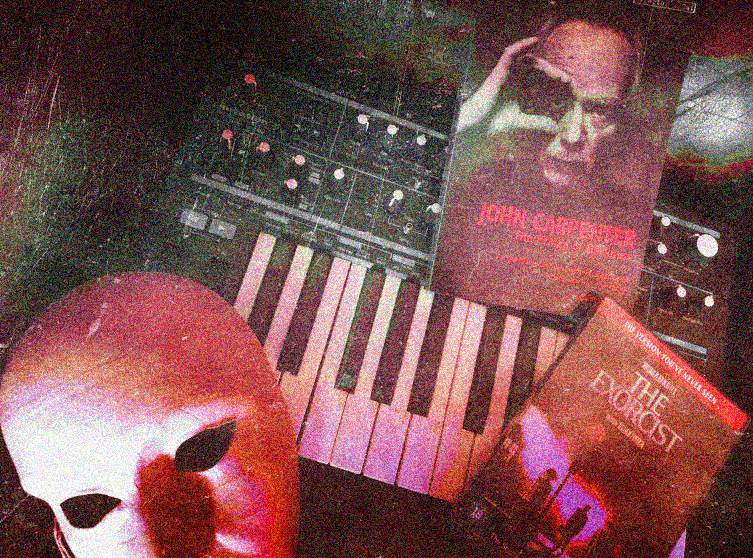
They will all scare you senseless too, but then this is the spooky season, after all! This isn’t a straight up ‘Best Of’: it’s more a curiosity cabinet filled with things that have caught my ear over the years. Don your darkest robe, locate your oversized crucifix and follow me as we descend into the depths of horror…
The Horror
Halloween - Moog, Piano, Odd Time Signature
The Exorcist - Piano, Tubular Bells, Silence, Abrasion, Odd Time Again
Longlegs - Glam Rock, Juxtaposition, Characterisation
The Wicker Man - Acoustic Folk, Narrative Themes, Vague Dread
Eyes Wide Shut - Reversed Vocal Samples, Minor Chords
Suspiria (both versions): Different Approaches to the Same Story (Rewriting), Music as Spells
80s Synths in Horror: Stranger Things, C.H.U.D., Near Dark
Bernard Herrmann - Abrupt Stylistic Changes, Non-standard Chords, Short Repeating Patterns
Silent Hill II - Blending Textures, Referencing Genres, Extreme Dissonance
Halloween - Moog, Piano, Odd Time Signature
John Carpenter was really onto something when he devised this simple tale of a wonky kid who returns to his home town to silently whack everybody in the neighbourhood. The stylish steadicam shots, the uncanny horror of Michael Myers’ masked appearance (a modified William ‘Captain Kirk’ Shatner mask, trivia fans) and the senselessness of the murders all added up to a frightful suburban nightmare.
Central to the feel of this move was Carpenter’s own score. Created by the director himself, he took a non-standard time signature (5/4, emphasising the ‘wrongness’ of the antagonist), and built a piano riff around it that almost feels like a drum beat in its repetition. On top of that, some suitably doomy chords played on Carpenter’s Minimoog synth added the menacing icing to what was and is a fantastically effective horror score.
The lessons here are the 5/4 rhythm (count it 1-2-3,1-2-3, 1-2, 1-2, if that helps) and the sparseness of the arrangement. Carpenter is great with modulation - moving the whole riffs/phrase onto a different tone within a relative key - and you can hear this in other scores of his, namely The Fog.
So, all you need to recreate a classic John Carpenter synth score like Halloween is one piano, one analog synth, a good ear for time signatures, and a dark imagination!
John Carpenter = Horror Icon. Damn right!
The Exorcist - Piano, Tubular Bells, Silence, Abrasion, Odd Time Again
There are endless things to talk about in William Friedkin’s 1973 movie The Exorcist, but one particularly notable element is the sound. The whole movie is a manipulative masterpiece, and the accompanying score (actually an accumulation of a number of existing pieces and sources) is an excellent example of storytelling through sound. Leaving aside the Oscar-winning sound design (though I do think that the score itself is used as much for sound effect reasons as for traditional score), The Exorcist’s score is wonderfully sparse, with the lion’s share of the soundtrack action being silence. There are signature moments, though: like the portentous choral work in the Iraq scenes (by avant-garde composer Krzysztof Penderecki), and other abrupt fright scenes underpinned by Leonard Slatkin and others.
(The trailer uses parts of the rejected score by Lalo Shiffrin)
The key piece, of course, is the use of the intro section from Mike Oldfield’s eccentric epic The Tubular Bells. The album develops and changes away from this motif after a short few minutes, but its inclusion in The Exorcist is a masterstroke of mood setting. Played on a piano and then followed by those titular bells, it is an eerily child-like and blatantly supernatural sounding piece of music, performed in the most unusual time signature of 15/8.
This iconic piece of music is used three times in the movie: during a leafy walk through Georgetown, during a discussion of exorcism as a possibility for Regan, and finally at the end, as Father Dyer contemplates events just before the end credits.
Get the vibe by keeping your notes simple and cyclical, play in a minor key, and try out the 15/8 time signature. If you want a good cheat for counting, simply miss one beat in every alternate bar.
Longlegs - Glam Rock, Juxtaposition, Characterisation
One of this year’s most effective scary movies must surely be Longlegs, the Nicholas Cage-starring serial killer movie that owes a stylistic debt to The Silence of the Lambs.
Longlegs has an effective score, but perhaps the most notable element for me is the use of T-Rex’s music. Hardly terrifying on its own, the retro glam sounds of Marc Bolan’s tunes help create a strange, anachronistic atmosphere when used in tandem with the wintery, tense visuals.
The significance, though, lies in the relation to Longlegs himself. I won’t mention too much in case you haven’t seen this one (it’s only a few months old, after all), but he does identify strongly with the glam icon, and there is a slight smidgen of humanity in that recognition.
The juxtaposition of this music with the events of the movie is a powerful way to create a strange abrasion in the film’s vibe, which is otherwise almost constant dread. Think about jarring juxtapositions in your own music. Rather than the cliched ‘cute music when bad stuff happens’, why not consider the multitude of fresher ways in which you can enrichen your songs with juxtaposition?
The Wicker Man - Acoustic Folk, Narrative Themes, Vague Dread
The Wicker Man is a defining folk horror movie: much loved and imitated (let’s ignore the ‘not the bees!’ remake, ok?), the slow burn atmosphere is one of the main selling points. A lot of this is achieved with the soundtrack which uses specially written folk music to evoke a pre-Christian pagan feel.
The songs were either original compositions written by American musician Paul Giovanni (who put together the band Magnet for these songs) or were interpretations of Robert Burns ballads. This of course makes sense since The Wicker Man is set on the fictitious Scottish island Summerisle.
Extra layers of depth were added by using cast members as vocalists in certain parts of the soundtrack, and also by using many songs that actually appear in the film itself as performances, rather than just as a soundtrack for the audience to hear.
One famous example is the sinisterly erotic Willow’s Song, which is sung by the character Willow and uses acoustic guitar, flute, cello, violin and french horn. A sparse but insistent rhythm pounded out on a single drum is an important element that ties it to pagan rituals.
To get this sound, all you need are traditional folk instruments and a large dollop of ‘sinister’.
Eyes Wide Shut - Reversed Vocal Samples, Minor Chords
Is Stanley Kubrick’s final movie Eyes Wide Shut a horror? I suppose it depends on what you define as ‘horror’ but it’s certainly a superbly creepy, sinister movie, and the infamous masked ball scene is reportedly an accurate recreation of a certain type of black mass.
(The scene from the movie, or as much as I can show you here!)
It’s certainly a threatening scene, and the accompanying score has become famous in its own right.
Interestingly, this music existed prior to the movie: director Stanley Kubrick heard the piece - written by violist Jocelyn Pook - and used it in the movie. The music - originally called Backwards Monks but subsequently changed to Masked Ball - is, as the original title suggests, based around a reversed sample of what I believe is two Romanian priests singing an Orthodox Catholic Liturgy. The higher voice seems to be from the same audio source as the lower one, so presumably it’s a call & response?
It’s enormously creepy, and the horrific overtones are increased when you consider the biblical notion that the reverse (or inverse) of God’s word is Satanic, so arguably this music is Satanic, too.
(The music without the scene, in order to hear the two voices)
That may or may not add to the effect for you, but when bands like Killing Joke and Ghost use this music as their intro tune at live gigs, you know it’s hitting the ‘creepy’ spot! Try it at home by recording a vocal track and reversing it on your DAW software. Add some successive minor chords behind it (the chords for this song are Am, Dm and Em, with an A#/Bb when the higher vocal begins) for a sound that is spooky and exotic.
For extra fun, why not try sampling a section of Masked Ball in your DAW and then reversing it? You’ll then be able to hear the original Liturgy in its intended ‘forwards’ way!
Suspiria (both versions): Different Approaches to the Same Story (Rewriting), Music as Spells
Dario Argento’s infamous giallo movie Suspiria is an avowed classic, and a wonderful example of how artful and expressive Italian horror movies can be. A story about a witches’ coven existing in a dance school, Suspiria (1977) is a larger-than-life horror with style to spare. Argento hired Italian prog band Goblin to provide a score, which is as delightfully demented as the film itself. Cold synths, crashing percussion and chants of ‘WITCH!’ dominate proceedings, as well as whispered vocals and other effects that blur the line between what’s heard in the movie (diegetic) and what’s just for us.
At the time, hiring rock bands to make film scores wasn’t actually as random as it sounds today: even Pink Floyd were called in to score Zabriskie Point in 1970.
Anyway, 40 years later, Suspiria was remade by Luca Guadagnino and the story was uprooted from seventies Italy to seventies Berlin. This time, the soundtrack was written and performed by Radiohead frontman Thom Yorke, whose otherworldly piano work and vocals pulled as much from the dancer’s studio routines as it did from the witchiness that bubbled just underneath the surface. He also used the film’s implied motif of hypnotism to create repetitive sections of music, whilst also commenting: “I kept thinking to myself that it’s a form of making spells. So when I was working in my studio I was making spells”.
The thing to take away here is how very different both approaches are to what is effectively the same overall story. The tone of each movie is vastly different, as are the musical scores, but they also both highlight completely different aspects of the same tale being told. I compare this to writing a song but arranging it in two completely different ways: different styles, instrumentation, and even lyrics. When stuck in a musical rut, taking a song you’ve already finished and reworking it into a completely different context - or even writing a different song based on the same premise - could achieve as effective results as the Suspiria remake.
Also, do a ‘Thom’ and think about your songs as not songs but something else (it doesn’t have to be spells): this may get your creativity working in a different - and hopefully effective - way.
80s Synths in Horror: Stranger Things, C.H.U.D., Near Dark
Retrotastic sci-fi/horror series Stranger Things is so reference-heavy in its style that pointing out each cultural crib is actually part of the whole exercise in watching it. 80s set and 80s-obsessed, it even replicates the font of 80s-era Stephen King book covers for its title sequence.
Talking of titles, the theme tune is one that’s instantly recognisable, and uses a type of sound that is available on almost all software and hardware synthesizers. We are talking of course about arpeggiators, which can easily be programmed in advance with selected notes to make those distinctive rippling clusters of repeating notes.
The score to C.H.U.D. - not perhaps on any horror fan’s all-time top ten - was nonetheless created on synths by members of OMD, during graveyard shifts in a LIverpool studio, when New Order weren’t in recording!
Near Dark is another notable horror score. Kathryn Bigelow’s vampire movie had no less than synth legends Tangerine Dream on soundtrack duties (they also did The Keep and Sorcerer), and the resulting score blended up much of the inimitable ‘80s-ness’ that aged badly for a while, but is now quite timeless.
Bernard Herrmann - Abrupt Stylistic Changes, Non-standard Chords, Short Repeating Patterns
Diminished chords are notoriously difficult to work into pleasant sounding music, but when your job calls on you to make scores for Alfred Hitchcock movies like Vertigo and Psycho, as well as the terrifying music of Cape Fear and many others, then those diminished chords can become really quite handy!
Bernard Herrmann was a classical composer in the old-school mode, but he kept a modern sensibility that rooted many of his compositions in avant-garde jazz, even if they didn’t sound that way. Listen to the theme from Vertigo (below) and see how the dark, doomy notes (loads of flattened fifths) give way to melodic parts that, whilst hardly cheerful, definitely shift the energy of the piece into a different direction.
This could be very useful in your own songwriting: just to remember that you can change quite a lot about what’s happening musically, as long as you retain something of the original essence, which in this case would be the disconcerting tritones/diminished notes. There’s a loveliness in his darkness, and that makes it quite a different consideration from straight-up ‘dark’.
Herrmann also made great use of short, repeated phrases - known as ostinati - or better known to use guitarists as riffs! Riffs can be orchestral - of course they can! - and Herrmann wielded his orchestra like the loudest rock band ever. So, it’s not all just screeching violins in shower scenes for him!
Silent Hill II - Blending Textures, Referencing Genres, Extreme Dissonance
Now, this isn’t a movie (there are Silent Hill movies but let’s not), but Silent Hill II is a stone cold classic horror nonetheless. Originally released on the Playstation 2, a remake is being released as I type, so I felt it was an appropriate time to reapproach the music.
Sound plays an enormously important part in Silent Hill II, both the superlative score by Akira Yamaoka and the sound design itself. Blending a Stephen King/Twin Peaks-ish American setting with elements of Clive Barker’s Hellraiser mythos and plenty of Japanese horror, Silent Hill II is actually a pretty sophisticated tale of guilt, coping, redemption and facing uncomfortable truths.
It’s not Super Mario, basically!
Yamaoka’s score is a deft blend of synthesised & sampled textures that perfectly describe the odd mix of serenity and claustrophobia that the titular haunted woodland town inhabits. Interestingly, he juxtaposes those sounds with some quite straight, grungey rock music, referencing the ‘Seattle sound’ (Silent Hill is hinted at being located in Maine, but it could easily be in the Pacific Northwest somewhere) and some heavier elements too. This music helps cement the town as a real place, and the characters as three dimensional people, thus deepening the experience for the player.
Finally, Yamaoka is able to both ‘go big’ when the drama requires it, and also to descend into some particularly dissonant atonality when things inevitably turn nightmarish. It’s this sure-footed straddling of genres that is the take away here: the idea that, as long as you have authority and cohesiveness in your sound, you can skip from genre to genre and still sound like you’re making one big statement.
So Many Great Scores, So Many Great Scares
I could honestly keep going and going here, but this is probably enough to get you thinking about how you can apply some of these ideas in your own music, right? I’ve looked at dissonance, unusual chords, keys, sampling, juxtaposition, context and other elements, all of which you can incorporate into your own music, or just recreate for fun this spooky season!

